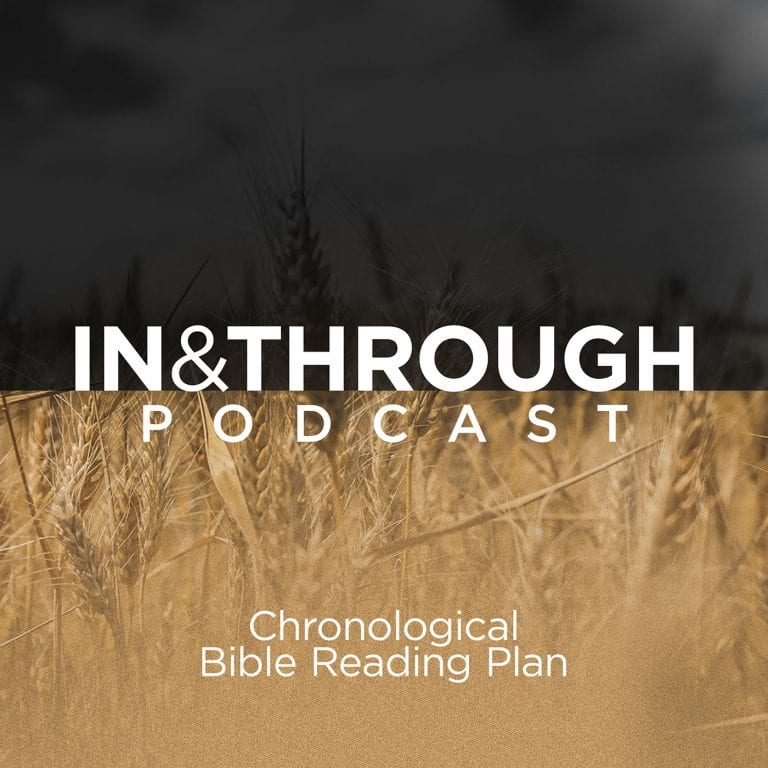In the words of the late Tim Keller, “Never describe the view of an opponent in a way he or she will not own. Rather describe their view so they say, “I couldn’t have put it better myself.” Only then should you proceed to refute the view.”
While TGC Canada Editor-in-Chief Wyatt Graham would be the first to affirm this wisdom, we contend that it is not what he has modeled in his recent critique of Jonathan Leeman’s book One Assembly. Frankly, we believe Dr. Graham has significantly misrepresented Leeman’s position.
Given Graham’s prolific output on this forum and the enthusiastic support we’re seeing from others promoting the piece, our fear is Graham’s critical article might short circuit an important pastoral and theological consideration for Canadian Christians by causing people to dismiss Leeman’s claim without engaging seriously with his textual argument for why local churches should not have multiple sites or services. Graham’s review comes close to arguing that One Assembly advocates are outside (“picking a fight with?”) both Nicaea and the Reformed tradition. As we’ll see, both are unwarranted charges.
At this point, we would encourage our readers to read Graham’s article in order to best engage with the next few paragraphs.
Graham’s Critique
While Graham admits to seeing the “prudential fittingness of a single assembly for church order”, his main issue with Leeman’s argument is that he “under-defines what a church is and finds himself unable (or unwilling) to let the Bible’s own idiom [the body of Christ] shape his ecclesiological language”.
This central charge from Graham is composed of two inter-connected arguments. He accuses Leeman of over-emphasizing the end-times assembly of the universal church, while diminishing its present-day spiritual reality.
- “While [Leeman] grants an “already” experience of the universal church, he calls it “a sign of the not yet.” […] So when he says, “The gathering manifests the universal church” (p. 23), he does not mean what Christians have traditionally understood by the universal church. He thinks more of the future, eschatological assembly rather than the one, holy, and catholic church united together in faith and the Spirit.”
Graham asserts that “body of Christ” is the more traditional sense to understand the universal church and cites a number of creeds and writings from church history to back that claim.
He also accuses Leeman of excluding ekklesia texts that explicitly define ekklesia as the “body of Christ” (Col 1:18, 24; Eph 1:22-23; 5:23).
Finally, he suspects Leeman does this because of his “non-traditional” view of the universal church, which is focused too much on the “not yet” assembly.
Answering the Critique
In short, none of these critiques hold.
First, Leeman is crystal clear about the scope of One Assembly: it is to investigate the impact of the Bible’s usage of ekklesia/assembly on how we should define a local church.
“If this book were a full-on ecclesiology, we would have to talk about the church as family, church as body, church as bride, church as pillar and foundation of truth, church as citizens of the kingdom, and so forth. We would need both the structural, institutional elements and the familial, fellowship elements—the skeleton and the muscle. And we would need to ensure that our intuitive assumptions and sense of responsibility were stuffed full with all that wonderful content. The single biblical element we’re meditating upon in this book comes from the word itself—ekklēsia in the Greek, “church” in English. Have you ever stopped and asked why Jesus picked the word ekklēsia? He could have used a more religious-sounding word like “synagogue.” We would have advised him to use softer, more inclusive words like “community” or “fellowship” or “society.” And certainly, he and the apostles were happy to use other metaphors, too, like “flock” and “family” and “body.” But Jesus also chose a hard-boundary, brick-heavy word that to first-century ears meant “assembly,” whether people were reading the Greek Old Testament or classical Greek writers like Aristotle” (p. 26-27).
For Graham, the heart of this methodology is “inscrutable.” But, why? Just because Leeman is focused on “ekklesia/assembly” does not mean he is excluding or undermining other ways in which the Bible describes a local church (body of Christ). Rather, he is focused on what this aspect brings to the table.
On this point, Leeman categorizes all four of the verses Graham says he excludes in which God equates ekklesia with “body of Christ.” Leeman files them under the banner of texts that use ekklesia to describe the universal Church (p.139). They aren’t controversial texts! Neither are they critical to what Leeman is arguing. There is no reason for Graham to assert that because Leeman doesn’t spill much ink discussing them, that he “does not have a logical place” for the centrality of Church as body of Christ, or the present reality of the universal church in general.
In fact, Leeman brings both ideas together in the fuller context of a quote that Graham oddly finds unorthodox when it comes to the universal church.
“The body of Christ is not just an idea. Nor is the family of God. Nor is the temple of the Spirit. You can actually see and hear and reach out and touch the body, family, and temple in the gathering. The gathering manifests the universal church, or what people sometimes capitalize as the Church. The gathering makes the Church present, and a church present to itself. That is, it enables the members to discover, see, and recognize themselves together as a church and as the Church” (p. 23).
It seems to us Graham sets up a false dichotomy throughout his article. He repeatedly pits “body of Christ” and “ekklesia/assembly” against each other; or at very least, he sees the former as more important than the latter when it comes to the universal church. It certainly seems that Graham has decided “assembly” is not central to what the universal church is. Graham appears to ground this conclusion in quotes from John Calvin, Herman Bavinck, and other creeds that don’t happen to include gathering language, but focus, rather, on the body metaphor. But surely these prooftexts don’t represent all of Reformed thought.
The Second London Baptist Confession (which Graham quotes against Leeman at one point) actually does locate a gathering in the universal church. Is that confession, therefore, outside the Reformed tradition too, as Graham at one point muses about Leeman’s view?
“The catholic or universal church, which (with respect to the internal work of the Spirit and truth of grace) may be called invisible, consists of the whole number of the elect, that have been, are, or shall be gathered into one, under Christ, the head thereof; and is the spouse, the body, the fulness of him that fills all in all.”
Jonathan Leeman is a reformed baptist. His ecclesiology falls squarely within this tradition. We would also note the presence of “gathered” language in each of the articles describing local churches in the 1689. It’s interesting that the prominent historical voices Graham draws from critically in his piece are not baptists.
As something of an aside, it’s worth noting that Leeman was given the task of writing a rather fulsome ecclesiology for the U.S. edition of TGC in 2022 which includes this definition: “the universal church is a heavenly and eschatological assembly of everyone—past, present, and future—who belongs to Christ’s new covenant and kingdom.” This is the church that Jesus promised to build in Matthew 16. This is the entire body of Christ, the family of God, and temple of the Spirit.”
We assume TGC Canada readers would agree with this definition, and that it’s orthodox. Rest assured, Leeman says nothing different in One Assembly.
Dogma vs Prudence (And “Fighting against Jesus”)
On the back of these mistaken critiques, Graham argues that the issue Leeman raises belongs in the realm of prudence or pastoral wisdom.
But removing his mistaken claim that Leeman’s definition of a church is “incomplete,” we don’t see how that is a reasonable conclusion.
This is a debate about the very definition of a local church. What it can and can’t be.
Either the Bible allows for a singular “local church” to refer to different groups of people gathering at different points of time or space (multi-site; multi-service), or it doesn’t.
Adopting either viewpoint has a major impact on the shape of church life and ministry and even on how one can describe what a local church is. This kind of biblical doctrine is classically placed in the secondary realm, alongside an issue such as baptism. Christians with differing biblical convictions on these doctrines will find it difficult to be in the same church with one another.
To this end, Leeman is aware that the phrase “picking a fight with Jesus” is provocative. He includes an inset answering this concern titled “Picking a fight with Jesus? Really?” within which he explains that language is simply the language of all secondary doctrines:
“The multisite question, I believe, is a second-order question. It concerns a new definition of a church: multiple gatherings and their administrative superstructure. For that reason, my regard for multisiters matches my regard for Presbyterians. I happily embrace each in the gospel, but with hat in hand and love in my heart, yes, I believe that both pick a fight with Jesus by wrongly defining the church” (p.37).
And we would add that Leeman would expect multisiters and Presbyterians to say the same of him! And yet for all of us to still unite around the gospel.
Conclusions
Our main concern in writing this article is not to stick up for Jonathan Leeman or disagree with Wyatt Graham. We simply don’t want anyone to believe they can safely disregard Leeman’s book, or (based on what we’re seeing from the social media response to Graham’s post) deem what it has to say as adiaphora — “of things indifferent.”
One Assembly is firmly rooted in the Reformed Baptist tradition and Nicaea, and presents a compelling biblical argument pastors must seriously grapple with.
It’s also of note that Graham makes no reference to Chapter 3 of the book, and how the One Assembly position serves catholicity. This chapter is worth meditating on no matter your conclusion on the rest of the book’s argument.
In fact, if you’re skeptical of the whole topic, we recommend you start by reading chapter three! It might calm some of your fears. For example, many have raised the concern that single assembly polity is simply not feasible in seasons of rapid growth, or pandemic, or when there is a lack of elders to send out for a church plant, etc. Leeman addresses most of these concerns head on with practical counsel, and summarizes his thoughts like this:
“Put simply, talking about church organization requires us to draw from two buckets: biblical regularities and circumstantial irregularities. For instance, a church with no pastors is still a church (as in Acts 14:23 or Titus 1:5). It’s simply an irregular church. It doesn’t conform to the “regula” (which means “rule” in Latin) of Scripture. Therefore, that church should work to get pastors. Likewise, a church temporarily divided between two services because its building burned down, or because it’s incubating a church plant, is an irregular church. It should work itself back toward regularity, back toward the regula or rule of Scripture with one assembly. If a church cannot gather weekly due to some type of constraint, it should begin the sometimes slow task of peaceably dividing into separate churches—for the sake of kingdom advancement and gain” (p.111).
For all the flack One Assembly has received for allegedly sowing division, Leeman argues (and we agree) that adopting this position actually serves the end of greater cooperation between local churches by cutting off the modern tendencies to build trendy church brands, compete with one another for members, and strive to construct mega church empires. It applies pressure on local churches to raise up leaders, send their best, partner across denominational lines, and to pray all the more for the Lord to bring revival to that other local church across town!
These secondary results help make One Assembly worthy of your consideration.



















